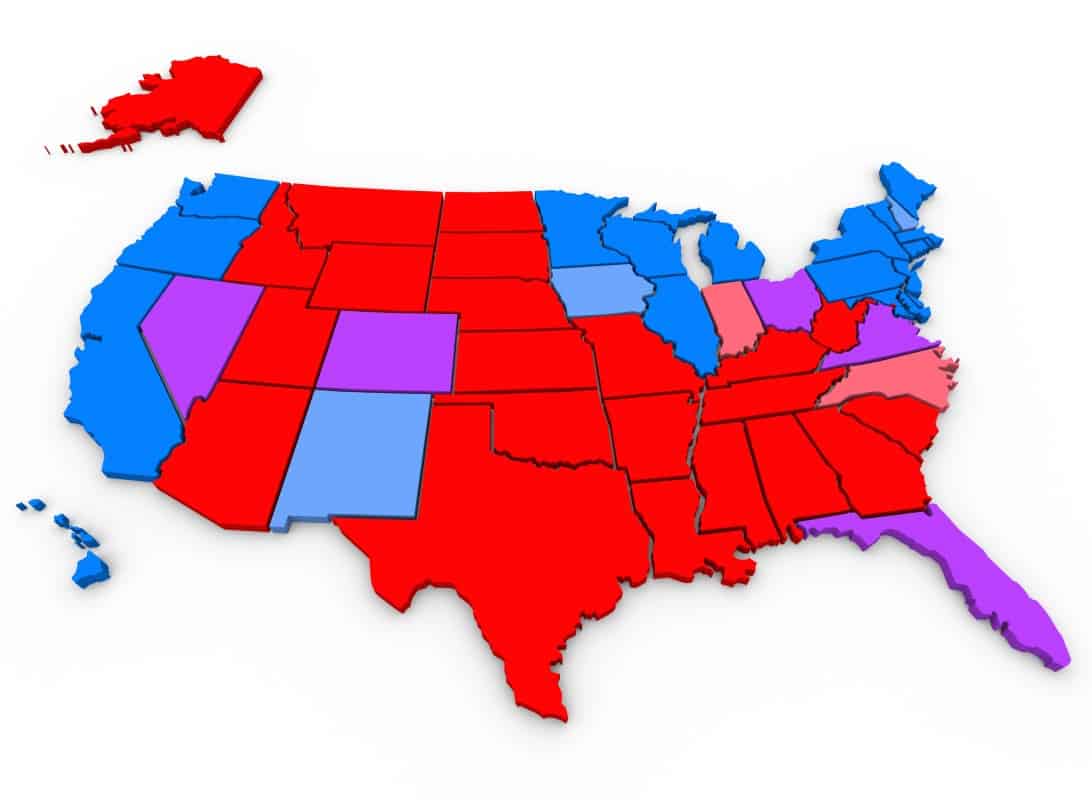Exodus From California and Massachusetts to Florida and Texas Continues

2023 saw booming demand for U-Haul equipment from California, Massachusetts, Illinois, and New Jersey as citizens chose to flee the West Coast and Northeast. On the U-Haul Growth Index, which shows net losses of one-way trucks in various states that year, California, Massachusetts and Illinois ranked 50th, 49th and 48th, respectively – marking their third consecutive year at the bottom positions. But what could be causing such a mass exodus from states like California, New York, and Illinois?
States With Largest Influx of People

The top 15 states attracting the most movement are
1. Texas
2. Florida
3. North Carolina
4. South Carolina
5. Tennessee
6. Idaho
7. Washington
8. Arizona
9. Colorado
10. Virginia
11. Nevada
12. Vermont
13. Utah
14. Wyoming
15. Delaware
Long-Term Migration Patterns Hold Steady

U-Haul rental trucks had the highest demand for outbound moves from California Massachusetts, Illinois, and New Jersey in 2023.
In 2023, the top growth states according to U-Haul’s Annual Growth Index were Texas, Florida, and the Carolinas—emerging as particularly sought-after one-way truck rental destinations. In fact, since 2016, when U-Haul started tracking statewide migration data, Texas and Florida have consistently topped the preferred states chart, while California and Illinois have been at the bottom of the list.
The top states for growth according to this metric (including their ranking in 2022) are as follows:
1. Texas (1)
2. Florida (2)
3. North Carolina (4)
4. South Carolina (3)
5. Tennessee (6)
Although U-Haul migration patterns may not align directly with population or economic expansion, the U-Haul Growth Index serves as a reliable indicator of states and cities’ ability to attract and retain residents.
For the sixth time in eight years (2016-2018 and 2021-2023), Texas secures the top spot as the No. 1 growth state and has consistently held a ranking no lower than second on the U-Haul Growth Index during this period
Texas Tops The Favorite List Again

For the third consecutive year, Texas secured the top spot on the U-Haul Growth Index for 2023, indicating it attracted the highest number of one-way influx of people moving to the Lone State.
The 2022 Census Bureau report corroborates the population increase by state, with Texas emerging as the largest-gaining state across the nation, totaling 30,029,572 inhabitants. Texas catapulted itself into the ranks of California as one of two states boasting an astounding 30 million residents or above.
Following Texas in the rankings were Florida, North Carolina, South Carolina, and Tennessee.
Florida A Close Second

Florida continues to draw new residents, attracting nearly the same number of one-way U-Haul customers as Texas in 2023. The Sunshine State has maintained its position as a top-four growth state for nine consecutive years, with Florida leading the U-Haul Growth Index in 2019.
California Ranks at The Bottom of U-Haul Growth States

In 2023, California experienced the lowest influx of people compared to those departing via one-way U-Haul rental trucks. This marks the fourth consecutive year that the Golden State has ranked last in the growth assessment.
Joining California in the bottom five are Massachusetts, Illinois, New Jersey and .Michigan
Is the Migration Due to Political Ideologies?

The top five states seeing a mass exodus (including their ranking in 2022) are all Democrat-controlled.
46. Michigan (48)
47. New Jersey (45)
48. Illinois (49)
49. Massachusetts (47)
50. California (50)
Over the nine years between 2010 and 2019, the U.S. Census Bureau reports that California, New York, New Jersey, Michigan, and Illinois have seen a collective population decline of 4 million. Moreover, a recent U-Haul study found that the five states with the highest influx of new residents are Republican strongholds, such as Texas and Florida. These migration trends could suggest the political management of states driving the exodus.
Impact of Changing Economic Conditions

U.S. Bureau of Economic Analysis (BEA) statistics released Dec 23, 2023, reveal that personal income surged in all 50 states and the District of Columbia, registering a 5.9 percent national growth. Texas topped the growth chart with a 8.3 percent compared to only 2.9% in California.
The percent change in real personal income trend from 2022 showed similar patterns with Texas at 8.2% compared to California at 3.8%.
Why Are Certain States Shedding Residents?

From the high cost of living to remote job opportunities and even weather, there are numerous reasons why people left California, Massachusetts and Illinois in 2023. Regardless of their motivation for migration, one thing is sure: a significant movement away from these states occurred this year.
As remote working options become increasingly available, a surge in population growth and migration to lower-cost-of-living areas will occur. Furthermore, these cities and states now afford more significant job opportunities than ever.
Also, the baby boomer generation moving into retirement would migrate towards states with warmer weather and lower living costs and taxes. For those worried about income taxes, Texas and Florida are ideal locations to live since they do not charge state income tax.
Companies transfer across state borders due to taxes, labor costs, and a lack of available employees. Unfortunately, when businesses vacate a region, their work opportunities disappear. Consequently, this could result in an influx of citizens to the new state and stifle economic growth for the states abandoned by the businesses.
Importance of Tracking Migration Trends

The movement of human capital across state lines would impact the state’s potential economic output by changing the size of the labor force. From burgeoning industries to those in decline, highly skilled personnel occupy vital roles essential for any economic development.
Migration trends also directly impact the state’s tax base and net fiscal contribution. It also affects property values for the local population and demand for real estate investing. Population growth is one of the many factors to consider when picking the best states for real estate investors.
Texas property taxes are based on the appraised value compared to California, where the assessed value is equal to the purchase price, and annual increases are capped at 2%.
For the first time in its 171-year history, California has seen a decrease in congressional representation due to changes based on new population estimates for each state reported by the U.S. Census Bureau. The number of seats allotted in Congress for this populous state dropped from 53 House districts to 52.
One fewer representative in the House also means one fewer vote from California in the Electoral College that decides the presidency and proportionately less of the federal money allocated based on population each year. The power shifts to Texas, which add two seats, and Florida, which gets one seat based on population growth.
As these migration trends continue to increase, California and Illinois, ranked at the bottom of the list yearly, will have to consider the long-term ramifications of their citizens’ departures.

John Dealbreuin came from a third world country to the US with only $1,000 not knowing anyone; guided by an immigrant dream. In 12 years, he achieved his retirement number.
He started Financial Freedom Countdown to help everyone think differently about their financial challenges and live their best lives. John resides in the San Francisco Bay Area enjoying nature trails and weight training.
Here are his recommended tools
M1 Finance: John compared M1 Finance against Vanguard, Schwab, Fidelity, Wealthfront and Betterment to find the perfect investment platform. He uses it due to zero fees, very low minimums, automated investment with automatic rebalancing. The pre-built asset allocations and fractional shares helps one get started right away.
Personal Capital: This is a free tool John uses to track his net worth on a regular basis and as a retirement planner. It also alerts him wrt hidden fees and has a budget tracker included.
Streitwise is available for accredited and non-accredited investors. They have one of the lowest fees and high “skin in the game,” with over $5M of capital invested by founders in the deals. It is also open to foreign/non-USA investor. Minimum investment is $5,000.
Platforms like Yieldstreet provide investment options in art, legal, structured notes, venture capital, etc. They also have fixed-income portfolios spread across multiple asset classes with a single investment with low minimums of $10,000.






